In this review, we’ll look at a short domestic flight between Seoul’s Gimpo Airport and the city of Yeosu, at the southern edge of the Korean peninsula.
Welcome aboard Korean Air Flight KE 1331.
Note: The details presented here are only for the specific flight reviewed. This information might not hold true for previous or future flights, even if operated by the same airline on the same route and/or under the same flight number.
For the sake of brevity, IATA airline and airport codes have been used throughout this report in place of full names (e.g., “KE” instead of “Korean Air”; “GMP” instead of “Gimpo International Airport”).
This review covers the outbound leg (GMP-RSU) of a round-trip GMP-RSU-GMP journey. Click here to read my report on the return leg (RSU-GMP).
ROUTE MAP
OVERVIEW
Flight details
Airline and flight number : Korean Air (KE) 1331
Route : Seoul-Gimpo, South Korea (IATA code: GMP) to Yeosu/Suncheon, South Korea (IATA code: RSU)
Route type : Domestic
Date : Friday, 24 January 2020
Scheduled departure time : 06:45
Actual departure time : 07:08
Scheduled arrival time : 07:45
Actual arrival time : 07:53
Equipment and cabin
Aircraft : Boeing 737-800
Manufacturer : Boeing
Registration number : HL7568
Passenger capacity : 12 Prestige (Business), 135 Economy (147 total)
Cabin configuration (seat maps) : Official Site
Travel class flown : Prestige Class (Business Class)
Here’s HL7568 parked on the tarmac at GMP before departure.
This aeroplane was delivered in mid-2001, making it almost 19 years old when I hopped aboard for flight KE 1331. It acquired its present SkyTeam livery in 2012, although there’s no mistaking the operating carrier as “KOREAN AIR” is still proudly displayed on the fuselage just forward of the wings.
HL7568’s somewhat advanced age will become even more apparent later when we check out its interiors. Nonetheless, the aircraft as a whole appeared to be in good shape – outdated cabin equipment aside – and I didn’t notice anything during the flight (or during the critical take-off and landing phases) that would give cause for concern.
PRE-DEPARTURE EXPERIENCE
At the airport
Nearly all intra-Korea flights out of the Seoul area use the Domestic Terminal – identified as terminal “D” on my ticket – of Gimpo International Airport (IATA code: GMP).
The Domestic Terminal was originally constructed decades ago, but a massive renovation project – completed in 2018 – has radically transformed its interiors. You can learn more about the experience of departing from this facility in my related Terminal Report (click here to read Part 1, and click here for Part 2).
Check-in and baggage
On the day of my flight, KE was based at counters 27-42 of the Domestic Terminal’s check-in hall.
Since 24th January was the first day of the long Seollal weekend in 2020 (NB: the date varies year by year), I expected long queues with Koreans flooding out of Seoul in droves to visit their hometowns. To save time at the counter – and because I was staying in a hotel within walking distance of the terminal anyway – I paid a quick visit the day before and got my boarding pass from one of the self check-in kiosks.
Here’s a cropped image of my boarding pass (with a few sections trimmed away and details fuzzed out). Printed on a long strip of thermal paper, the document looks and feels more like a store receipt than the conventional card-stock boarding passes one would receive for international flights. I noticed that those checking in at the counters were issued similar “receipt” passes – except printed on coloured paper stock – so this appears to be standard for domestic flights.
With that done, I was entitled to use one of the bag drop counters when I turned up at GMP on departure day.
Here’s the thing, though: I also happened to be travelling in Prestige Class (KE’s Business Class brand) so I used the exclusive Sky Priority lane instead.
My Prestige Class domestic ticket entitled me to 30 kg of complimentary checked baggage allowance (an Economy Ticket would have come with 20 kg free). Detailed information on baggage allowances and restrictions – covering both checked and cabin luggage – are available on KE’s official website.
Lounge
KE operates the KAL Lounge, one of the two airside lounges in the Domestic Terminal (the other is run by Asiana Airlines). Read more about this facility in my separate Lounge Report.
Boarding
At the departure gate, separate lanes were provided for Economy Class and for those entitled to priority boarding (including Prestige Class).
A little over half of the Domestic Terminal’s boarding gates are equipped with aerobridges. The remainder – including Gate 9 – are bus gates, with stairs leading down to an embarkation point at tarmac/ground level.
A low-floored airport bus brought us from the terminal building to the remote parking stand where our aircraft was berthed.
We climbed up to the aeroplane door using a set of mobile boarding stairs. Although the stairs were roofed, we were essentially at the mercy of the weather – in this case, the harsh chill of a Korean winter – and the queue moved at a glacial pace since the usual boarding pass inspections were taking place at the top.
ONBOARD EXPERIENCE
Cabin interior and seating
The 147-seat version of KE’s Boeing 737-800 is fitted with 12 Prestige Class seats in the forward cabin, and 135 Economy Class seats further aft. The Prestige Class seats are organised into three rows (numbered 7-9), four abreast, whereas Economy Class has a tighter configuration of six seats to each row.
Although larger than the Economy Class seats behind, these Prestige Class seats have clearly seen better days.
Outdated? Hmm. I think “ancient” or “prehistoric” or “this thing should be ripped out and dumped in a landfill” would be closer to the mark.
Here’s a wider shot of the cabin taken from my seat, 8E (second row).
There were seat recline and legrest controls under my armrest, but these buttons were next to useless. Only the most furious, most determined pressing could wring out any sort of compliance.
You won’t find me complaining about the generous legroom, though. It’s there – and there’s plenty of it.
The tray table slides out from under the side armrest. Flip the cover open, pull out the table, fold out and plonk down. It’s of a bifold design, with enough room for all the accoutrements of a meal … except that you’re not entitled to a meal on KE domestic flights.
In-flight service and amenities
Pared-down service may have been the order of the day – given the very short length of this flight – but there were hints of Prestige Class exclusivity sprinkled around.
To start, there’s the clothes hanger tucked into each Prestige Class seat pocket.
Bear in mind that it was deep winter, and practically everyone on board was garbed in a thick insulating coat of some description. Here in the forward cabin, rather than fuss about with stuffing the article overhead or spreading it over one’s legs, one need only suspend the coat from the supplied hanger and entrust the same to a cabin attendant. They’ll secure your coat in an onboard closet and return it before arrival.
There’s also the nice, fluffy, extra-sized pillow propped up on every seat prior to boarding.
The seat pocket contents were pretty much standard-issue, with no discernible Prestige Class extras…
…although the view outside my window certainly looked special.
The view from my seat
I doubt I would have enjoyed a clear vista like this from anywhere close to the wing.
The view improved even more as the sun edged higher, with a rich golden glow lighting up the horizon.
This next picture – taken just before landing – is one of my favourites from the entire flight. That concentration of buildings left of centre is the eastern flank of the city of Yeosu, including its port and the site of Expo 2012.
Catering
Not much to report on this subject, I’m afraid. On a domestic flight such as this – and quite a short one at that – meal services are off the table (even in Prestige Class).
Thankfully, we were at least served a choice of beverage during our time in the air.
In-flight entertainment
No individual IFE screens – not even here in Prestige Class. Just folding TVs that pop out of the ceiling, and only for the safety briefing.
Not that IFE would have been needed on such a short flight. Indeed, I believe that the system would be powered down and screens kept on a static image if this were a newer aircraft.
Incidentally, the screens might have been old, but the safety video shown was KE’s latest version: a slick, part-musical film featuring members of a K-pop group.
I suppose that counts as “entertainment”, of a sort … except that it’s less than five minutes long and only runs before take-off, hence not really “in-flight entertainment”, haha.
OVERALL IMPRESSION
When it comes to short domestic flights like this one, there really isn’t much to expect ahead of departure – nor much to say after landing. Forty-five minutes in the air doesn’t offer much room for experiencing much of anything.
The aircraft’s age and its outdated cabin equipment definitely stood out, although it’s important not to overstate their impact on a brief hop like GMP-RSU. The lack of an in-flight meal service, which I’d already been made aware of in reviews of other Korean domestic flights, makes sense under the circumstances. The absence of IFE is likewise understandable.
In the end, the flight was comfortable (especially in my roomy Prestige Class seat) and our arrival was only slightly delayed.
All things considered, I’m a satisfied passenger and would gladly fly with Korean Air again on this route. (That said, I might try another carrier next time just to give myself a fresh experience.)
Cheerio.










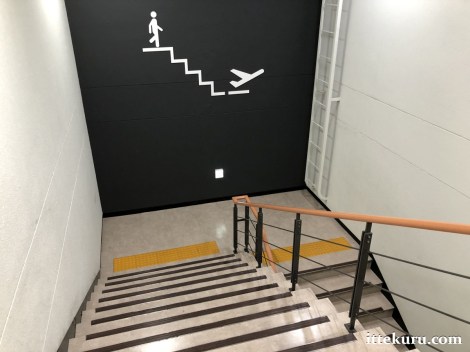



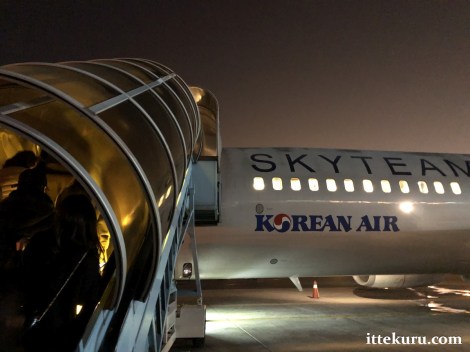









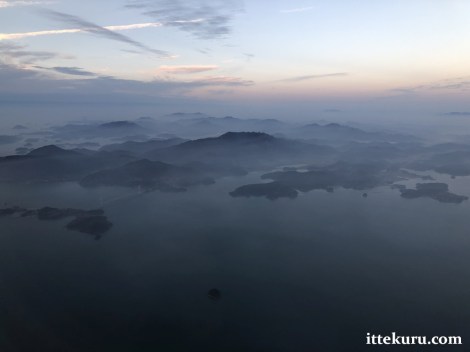
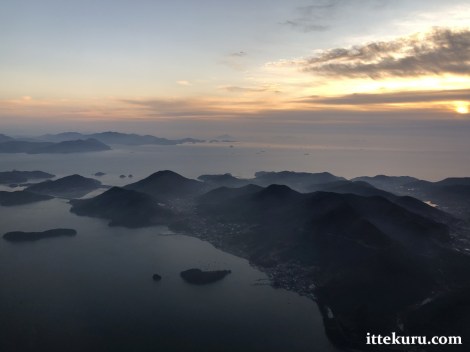


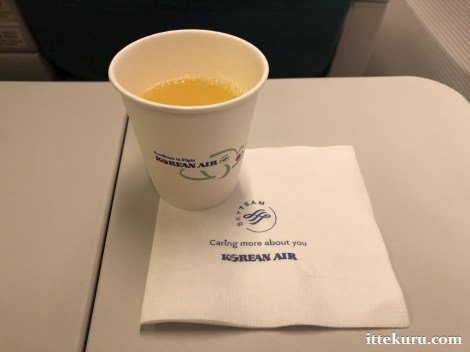
Pingback: Lounge Report: Korean Air's KAL Lounge, Gimpo Airport Domestic Terminal (GMP) | Within striking distance·
Pingback: Terminal Report: Yeosu Airport (RSU), Jeollanam-do, South Korea – Arrivals | Within striking distance·
Pingback: Field Report: Naganeupseong Folk Village, Suncheon, South Korea (24 January 2020) | Within striking distance·
Pingback: Field Report: Suncheon Bay Wetland, Jeollanam-do, South Korea (24 January 2020) | Within striking distance·
Pingback: Flight Report: RSU-GMP on Korean Air Flight KE 1332 (27 January 2020) | Within striking distance·
Pingback: Terminal Report: Gimpo Airport Domestic Terminal, Seoul, South Korea – Arrivals | Within striking distance·